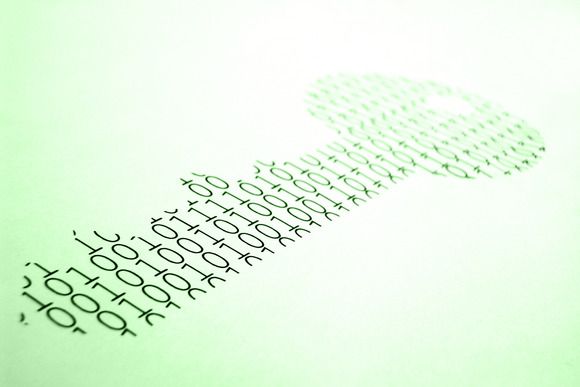An international team of scientists has set a new record for the complexity possible on a quantum computing chip, bringing us one step closer to the ultra-secure telecommunications of the future.
Image: Shutterstock.


Digital CMOS camera with QE technology with improved photon detection capabilities — now this should interest to many medical departments, researchers, and even for security checkpoint screening.
Hamamatsu Corporation has again raised the bar in scientific CMOS camera performance with the 2016 version of the ORCA-Flash4.0 V2. The increased quantum efficiency (QE), now at a peak of 82%, increases the likelihood of detecting the faintest of signals, helping to answer the question “Is it there?” And, for brighter samples, higher QE translates into shorter exposure times without sacrificing image quality. The ORCA-Flash4.0 V2 opens up new possibilities for imaging in low conditions and improves signal to noise at all light levels.
Since its introduction and evolution, the ORCA-Flash4.0 series has become the favorite scientific CMOS camera of investigators everywhere, powering cutting-edge imaging research in every field from biology and chemistry to astrophysics and nanotechnology. The widespread appeal is due to the vast array of high-performance features: low read noise, large field of view, high dynamic range and fast frame rates. The newly enhanced QE of the “Flash V2” only serves to increase the power and versatility of this game-changing camera.
The ORCA-Flash4.0 V2 is available and shipping now. What breakthrough will you make with your extra photons?

“There may well be approaches that don’t require Apple to build a custom firmware to defeat some of the iPhone’s security measures.”


Much of the encryption world today depends on the challenge of factoring large numbers, but scientists now say they’ve created the first five-atom quantum computer with the potential to crack the security of traditional encryption schemes.
In traditional computing, numbers are represented by either 0s or 1s, but quantum computing relies on atomic-scale units, or “qubits,” that can be simultaneously 0 and 1 — a state known as a superposition that’s far more efficient. It typically takes about 12 qubits to factor the number 15, but researchers at MIT and the University of Innsbruck in Austria have found a way to pare that down to five qubits, each represented by a single atom, they said this week.
Using laser pulses to keep the quantum system stable by holding the atoms in an ion trap, the new system promises scalability as well, as more atoms and lasers can be added to build a bigger and faster quantum computer able to factor much larger numbers. That, in turn, presents new risks for factorization-based methods such as RSA, used for protecting credit cards, state secrets and other confidential data.

Interesting Question to ask.
The battle between the FBI and Apple over the unlocking of a terrorist’s iPhone will likely require Congress to create new legislation. That’s because there really aren’t any existing laws which encompass technologies such as these. The battle is between security and privacy, with Silicon Valley fighting for privacy. The debates in Congress will be ugly, uninformed, and emotional. Lawmakers won’t know which side to pick and will flip flop between what lobbyists ask and the public’s fear du jour. And because there is no consensus on what is right or wrong, any decision they make today will likely be changed tomorrow.
This is a prelude of things to come, not only with encryption technologies, but everything from artificial intelligence to drones, robotics, and synthetic biology. Technology is moving faster than our ability to understand it, and there is no consensus on what is ethical. It isn’t just the lawmakers who are not well-informed, the originators of the technologies themselves don’t understand the full ramifications of what they are creating. They may take strong positions today based on their emotions and financial interests, but as they learn more, they too will change their views.
Imagine if there was a terror attack in Silicon Valley — at the headquarters of Facebook or Apple. Do you think that Tim Cook or Mark Zuckerberg would continue to put privacy ahead of national security?

Glad to see this article get published because it echoes many of the concerns established around China and Russia governments and their hackers having their infrastructures on Quantum before US, Europe, and Canada. Computer scientists at MIT and the University of Innsbruck say they’ve assembled the first five quantum bits (qubits) of a quantum computer that could someday factor any number, and thereby crack the security of traditional encryption schemes.
Shor’s algorithm performed in a system less than half the size experts expected.
A realistic article on AI — especially around AI being manipulated by others for their own gain which I have also identified as the real risks with AI.
Artificial intelligence (AI), once the seeming red-headed stepchild of the scientific community, has come a long way in the past two decades. Most of us have reconciled with the fact that we can’t live without our smartphones and Siri, and AI’s seemingly omnipotent nature has infiltrated the nearest and farthest corners of our lives, from robo-advisors on Wall Street and crime-spotting security cameras, to big data analysis by Google’s BigQuery and Watson’s entry into diagnostics in the medical field.
In many unforeseen ways, AI is helping to improve and make our lives more efficient, though the reverse degeneration of human economic and cultural structures is also a potential reality. The Future of Life Institute’s tagline sums it up in succinct fashion: “Technology is giving life the potential to flourish like never before…or to self-destruct.” Humans are the creators, but will we always have control of our revolutionary inventions?
To much of the general public, AI is AI is AI, but this is only part truth. Today, there are two primary strands of AI development — ANI (Artificial Narrow Intelligence) and AGI (Artificial General Intelligence). ANI is often termed “weak AI” and is “the expert” of the pair, using its intelligence to perform specific functions. Most of the technology with which we surround ourselves (including Siri) falls into the ANI bucket. AGI is the next generation of ANI, and it’s the type of AI behind dreams of building a machine that achieves human levels of consciousness.

“For the third time in less than a year, security researchers have found a method to attack encrypted Web communications, a direct result of weaknesses that were mandated two decades ago by the U.S. government”
This could have more than just security gap ripple effects; it could actually be a loophole for any claims/ lawsuits that consumers and others have with various organizations.
For the third time in under a year, security researchers have found a method to attack encrypted Web communications, a direct result of weaknesses that were mandated two decades ago by the U.S. government.

Reminder to everyone who loves hearing about what NextGen Technologies that US Government has been working on: March 11th, US IARPA is hosting a conference on “Odin” (detection technologies to ensure biometric security systems can detect when someone is attempting to disguise their biometric identity.)
The Intelligence Advanced Research Projects Activity plans to hold a conference related to a biometric presentation attack detection programme called Odin.
The conference, to be held on 11 March in Washington, will be to provide information on Odin and the research problems the program aims to address, the agency noted.
The goal of the Odin programme is to develop biometric presentation attack detection technologies to ensure biometric security systems can detect when someone is attempting to disguise their biometric identity.